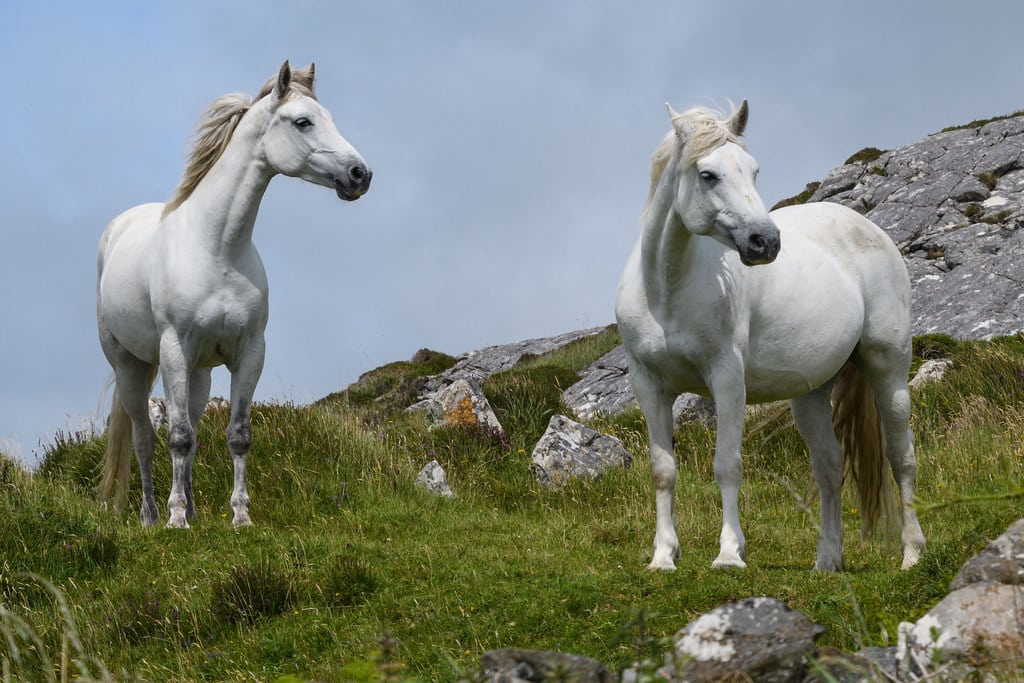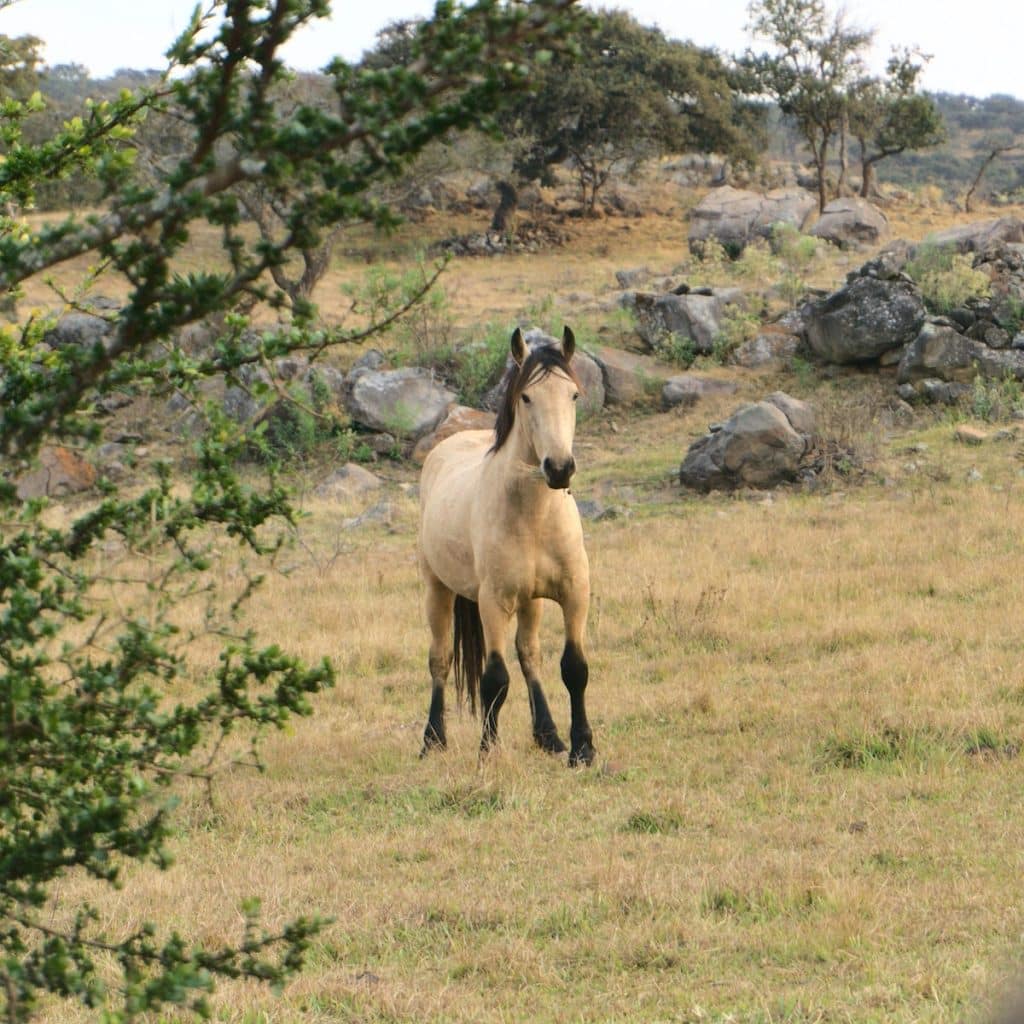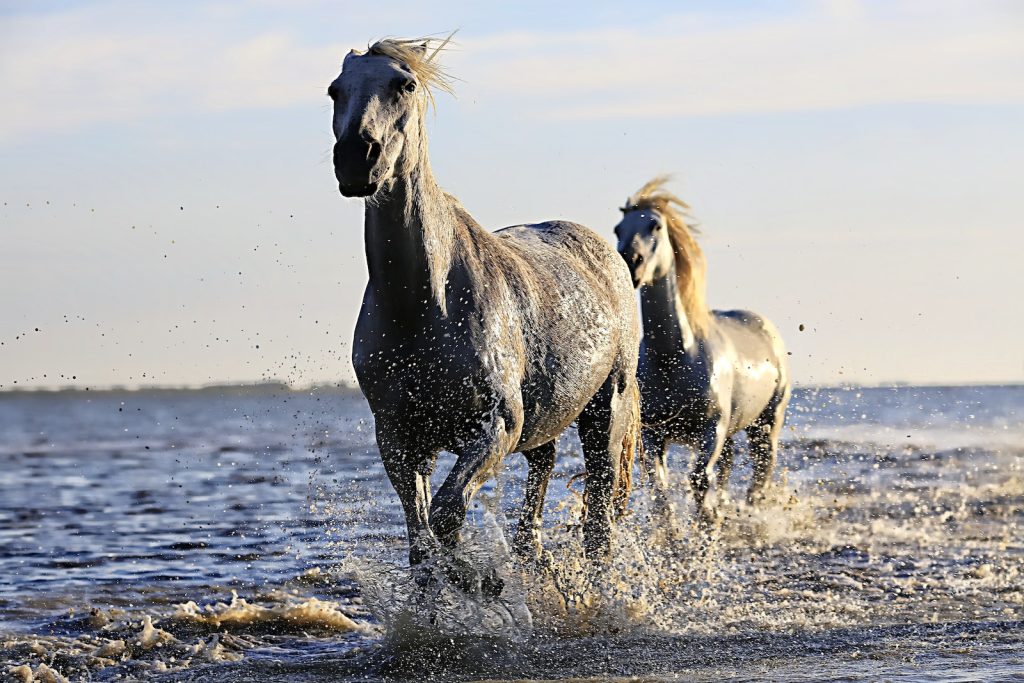
There are six different breeds of horses in Ireland. Although they are all unique, there are a few commonalities, mainly due to their heritage. Irish horses are used for work, riding, racing, and driving. Horses from Ireland are fortunate to have the opportunity to ride through some of the most beautiful lands and forests in the world. Let’s find out more about each of the six most prized Irish horse breeds.
1. The Connemara Pony
These ponies hail from Ireland’s west coast. They are known for their strength, courage, and even-tempered nature. You can find them in many colors including brown, grey, Palamino, and brown. They are muscular with long necks and alert eyes. Connemara ponies are bred to survive on limited foraging resources and can withstand harsh terrains. These ponies are social and enjoy being with humans.
2. The Irish Hobby
Unfortunately, this horse is no longer in existence. These horses are believed to have been used in the development of other Irish horse breeds such as the Irish Draught horse. Although these horses were smaller than others, their intelligence and brute strength did not diminish. Many believe that the Irish Hobby’s genes can be found today in thoroughbred horses. This is due to their speed.
3. The Irish Draught
This horse is Ireland’s national horse. Although the Irish Draught was initially bred for farm work, their athletic stature has made them popular as a sport horse. Because of their strength and ease of training, these horses are often crossbred with thoroughbreds. These horses are adaptable and can be trained to handle all types of terrain and weather conditions. These horses are so prized in Ireland, that the Draught Horse Society was established in 1970 to preserve them.
4. The Irish Sport

Because of the combination of Thoroughbreds and Irish Draughts, the Irish Sports horse was born. They excel at racing, jumping, and showing. They are dominant in competitions. They are known for their smooth galloping and great stamina. They are great companion horses and love to be ridden.
5. The Kerry Bog Pony

The Kerry Bog pony is believed to be a descendant of the Irish Hobby horse. They were wild horses that lived in the southwest of Ireland. Humans began to breed them to help with farming and transport goods. The Kerry Bog Pony, a small but sturdy breed, can withstand harsh environments. The Kerry Bog Pony has been exported to America, where it was used to breed an American breed. When fully mature, these animals can reach 48 inches in height.
6. The Gypsy Vanner
Because of their long, feathered coats with big, bright eyes, these horses are one of Ireland’s most recognizable horse breeds. They have long, beautiful manes and long, thin bodies. Although originally bred for driving wagons and caravans in the past, today they are loved as pets and horses. The Gypsy Vanner is gentle and easy to handle.
Wrapping up
Irish horses are graceful, elegant, and hard-working. Some horses are small, while others can be large. All are smart and can be trained. Despite their differences, they are all unique in their own way. Some are extinct while others are threatened. These interesting horse breeds remain popular today, however. What Irish horse breed do you find most fascinating? Leave a comment to share your thoughts.
What horse breeds originated in Ireland?
Draft Horses from Ireland: The Irish Draught horse is Ireland’s national horse breed, and it was bred largely for farm usage. Currently, they are particularly popular for crossbreeding with Thoroughbreds and Warmbloods, resulting in the popular Irish Sport Horses, which perform at the highest levels of eventing and show jumping.
What is the most popular horse breed?
Quarter horse in the United States The American quarter horse, America’s most popular horse breed, is popular with both English and Western riders. Because of their balanced temperament, quarter horses are excellent starter horses. Some people, on the other hand, have a lot of energy.
What is the purest horse breed?
Icelandic horses The Icelandic Horse is the world’s purest breed, thanks to 1000 years of no cross-breeding. They are the strongest horse breed pound for pound and have a lengthy lifespan.
What is the most courageous horse breed?
The Waler is regarded as one of the world’s toughest and most courageous breeds. Its ancestors may be traced back to the earliest horses transported to Australia by the First Fleets.
Which horse breed is the most devoted?
Spanish Horse This is a very attractive and faithful horse breed with a large heart. They are so kind that they will occasionally try to offer you something they don’t have.
What exactly is an Irish traditional horse?
The Traditional Irish Horse (TIH) is the original indigenous Irish Sport Horse breed, formed in Ireland 200-300 years ago from the Irish Draught, Thoroughbred, and, to a lesser extent, Connemara Pony.
Are Irish sport horses powerful?
Irish Sport Horses are athletic and robust, with soundness that rivals that of many other sport horse breeds. They have a long, slightly arched neck, sloping shoulders, a deep chest, and a short, muscular back.
Is the Irish Sport Horse a Warmblood breed?
The Irish Sport Horse, sometimes known as the Irish Hunter, is a warm-blood sports horse breed from Ireland that is mostly utilized for dressage, eventing, and show jumping. It was created in 1923 through the cross-breeding of Irish Draught and Thoroughbred stock. In the 1990s, there was some limited introduction of Hanoverian, Selle Française, and Trakehner blood
What exactly is an Irish Thoroughbred?
It is the result of a mix between Irish draught horses and thoroughbreds to showcase the best qualities of both prominent horse breeds. Irish sport horses are well-known for their speed, agility, and temperament. They are also well-known participants in horse sports.
Were horses indigenous to Ireland?
Horses arrived in Ireland long before it was incorporated as an island. A land bridge connected Derry to Scotland during the end of the last ice age, while another linked England to France. Herds of horses traveled west through Europe and into Ireland from the Asian steppes where they originated.